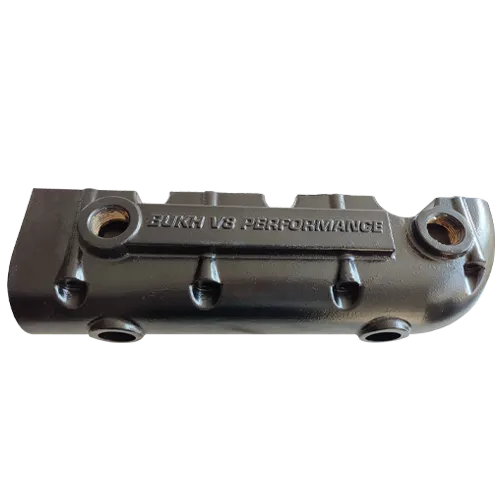Mobile:+86-311-808-126-83
Email:info@ydcastings.com
Understanding the Functionality of Circulation Pump Impellers in Fluid Dynamics
Understanding Circulation Pump Impellers Key Components of Fluid Dynamics
Circulation pumps are integral to numerous systems, from residential heating and cooling to industrial applications. At the core of these pumps is the impeller, a crucial component that plays a pivotal role in fluid movement and pressure generation. This article delves into the significance of circulation pump impellers, their types, design considerations, and their overall impact on pump efficiency.
What is a Circulation Pump?
A circulation pump, often referred to as a circulation or water pump, is designed to move fluids through a system. Commonly used in HVAC systems, hot water heating, and swimming pool systems, these pumps help maintain optimal temperature and flow. By efficiently circulating water or other fluids, they ensure that systems work effectively and consistently.
The Role of the Impeller
The impeller of a circulation pump is a rotating component that imparts energy to the fluid. Shaped typically like a flat or slightly curved disc with blades or vanes, the impeller is installed on a shaft that is rotated by an electric motor. As the impeller spins, the vanes push the fluid outward, creating a centrifugal force that increases pressure and velocity.
This action not only facilitates fluid movement but also helps to create a continuous flow, which is essential in maintaining heat transfer in heating systems or ensuring chemical processes function correctly in industrial applications.
Types of Impellers
There are several types of impellers used in circulation pumps, each designed for specific applications and environments
1. Closed Impellers These have a shroud covering the tops and bottoms of the blades, effectively channeling the fluid and increasing efficiency. They are common in clean fluid applications.
2. Open Impellers Featuring exposed blades, open impellers are suitable for handling fluids containing solids or debris. Their design facilitates easier cleaning and maintenance but may come with some efficiency loss in clean fluids.
3. Semi-Open Impellers A compromise between closed and open designs, semi-open impellers have a shroud on one side. They work well for applications that require a balance between efficiency and the ability to handle solids.
circulation pump impeller

4. Vortex Impellers These impellers create a vortex effect that allows for pumping fluids with high solids content without clogging. They are particularly useful in wastewater treatment and slurries.
Design Considerations
The design of an impeller significantly affects the performance of the circulation pump. Factors to consider include
- Diameter Larger impellers can move more fluid but may require more power. The balance between diameter and efficiency must be carefully evaluated.
- Blade Geometry The shape, angle, and number of blades all influence the fluid dynamics. Curved blades generally provide better performance than straight ones, and the angle can be adjusted to optimize flow rates.
- Material Selection Depending on the fluid being pumped, materials can vary. Stainless steel, bronze, and plastics are common choices, each offering different benefits related to corrosion resistance and durability.
- Operating Conditions Understanding the working environment, including temperature, viscosity, and potential for abrasion, is essential in selecting the appropriate impeller design.
The Impact of Impeller Performance on System Efficiency
The performance of the circulation pump impeller directly affects the overall system efficiency. An efficiently designed impeller reduces energy consumption, minimizes wear and tear, and extends the lifespan of the pump. Conversely, poorly designed impellers can lead to cavitation—a phenomenon that causes vibration, noise, and damage to pump components.
In industrial contexts, a highly efficient impeller can result in substantial cost savings, reduced downtime, and improved operational reliability. For residential systems, the right impeller choice can lead to lower utility bills and improved comfort levels.
Conclusion
The impeller is a fundamental component of circulation pumps, playing a critical role in fluid dynamics, efficiency, and system functionality. Understanding the types of impellers, their design considerations, and their importance in various applications is essential for optimizing performance and achieving desired outcomes. Whether in HVAC systems, industrial processes, or other fluid-related applications, the circulation pump impeller remains a key element in ensuring effective and reliable operations.
-
Understanding Metal Casting TechniquesNewsApr.02,2025
-
Understanding Exhaust Manifolds for Enhanced Engine PerformanceNewsApr.02,2025
-
The World of Metal FabricationNewsApr.02,2025
-
Key Components for Pump and Turbo EfficiencyNewsApr.02,2025
-
Essential Tools for Automotive Maintenance and RepairNewsApr.02,2025
-
Durable Valve Components for Effective Water ManagementNewsApr.02,2025











